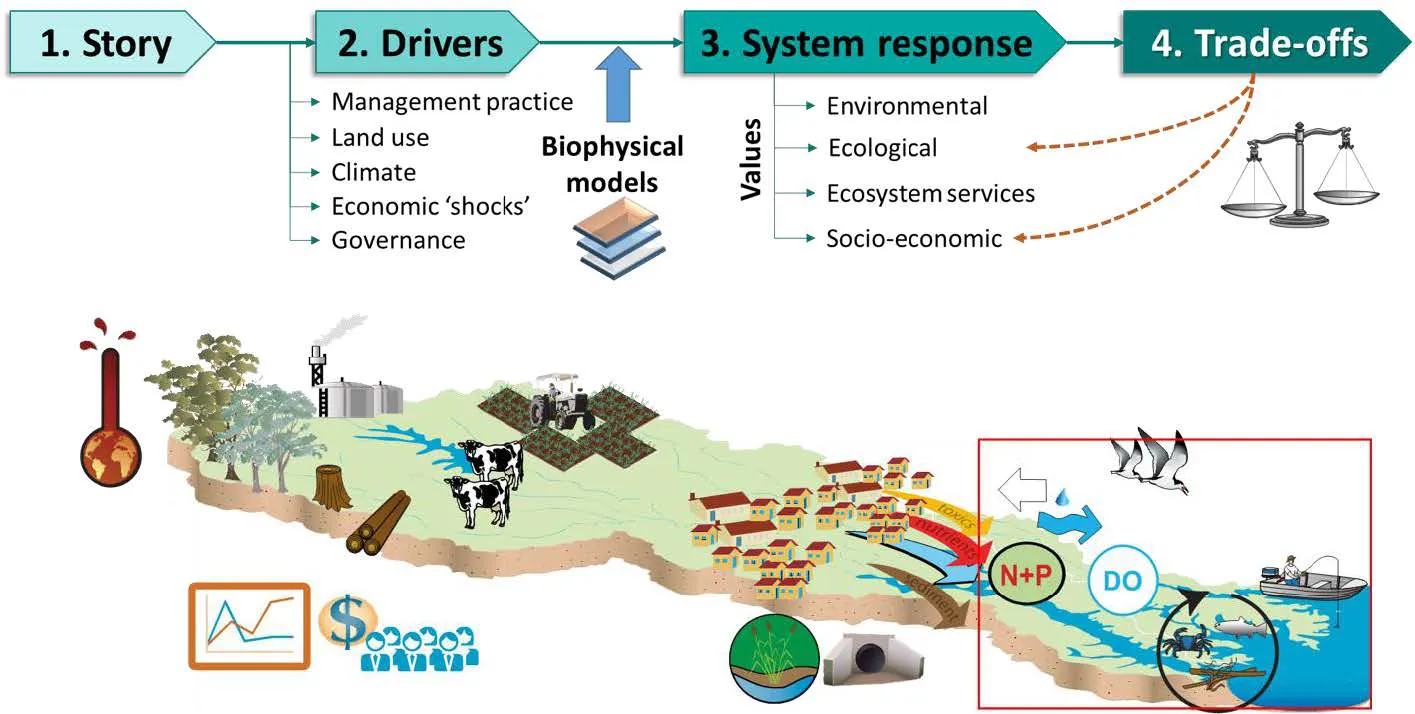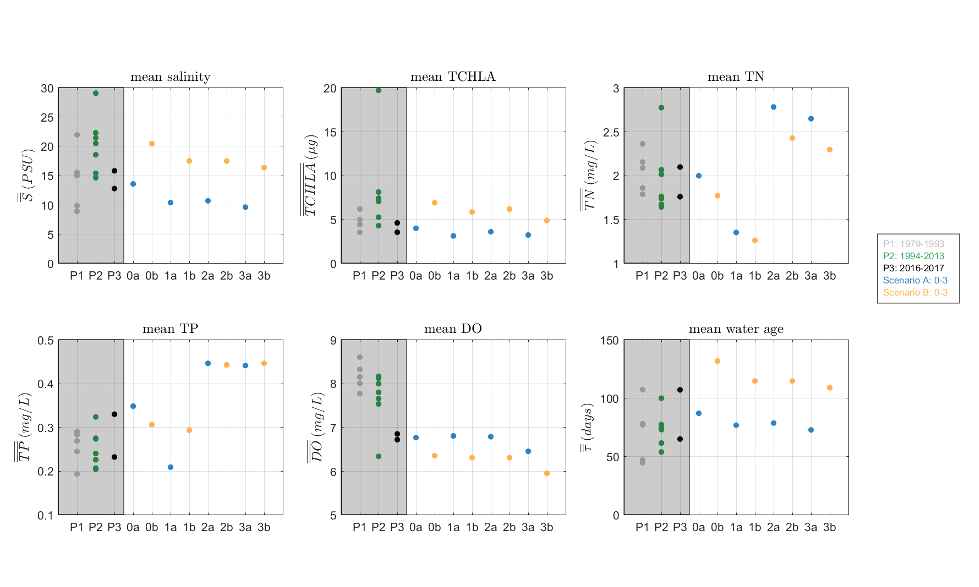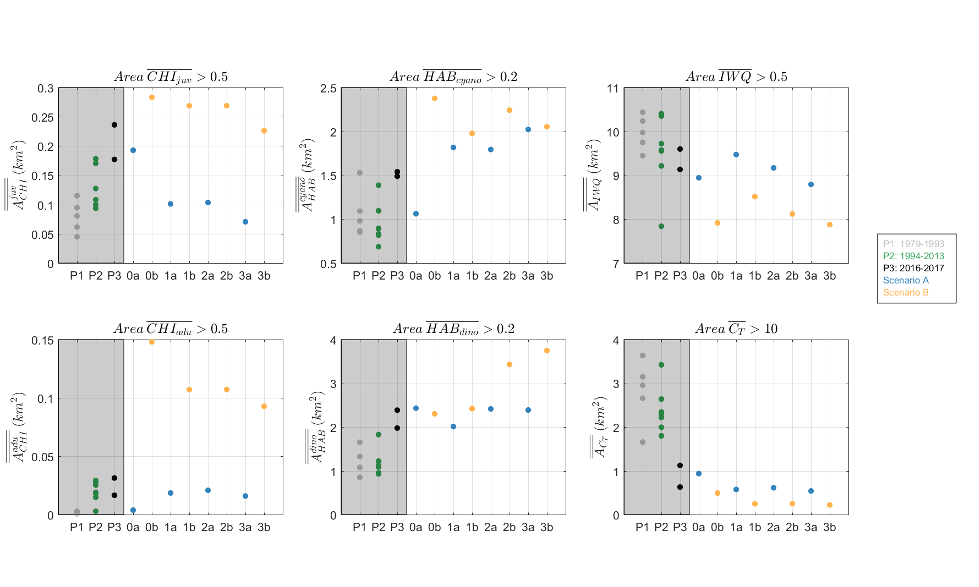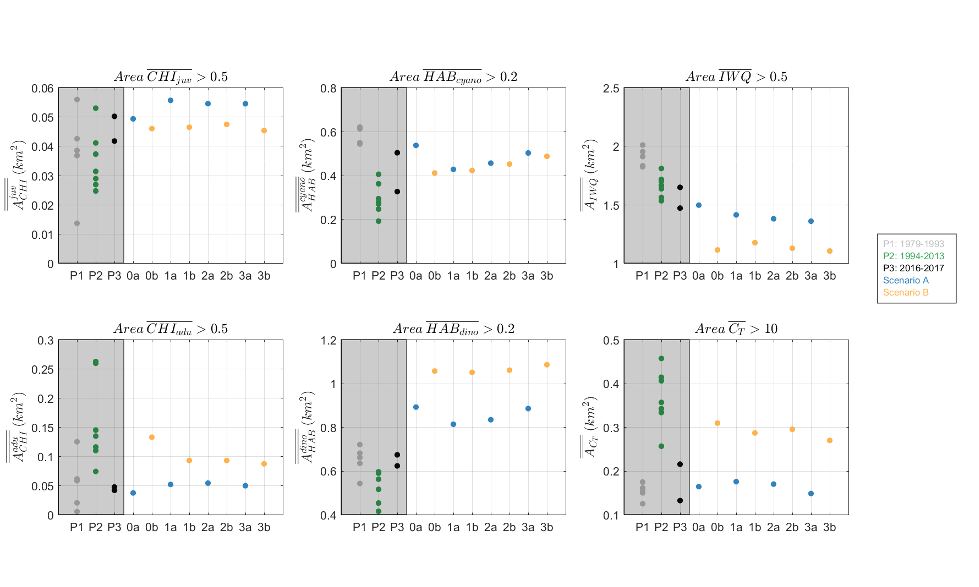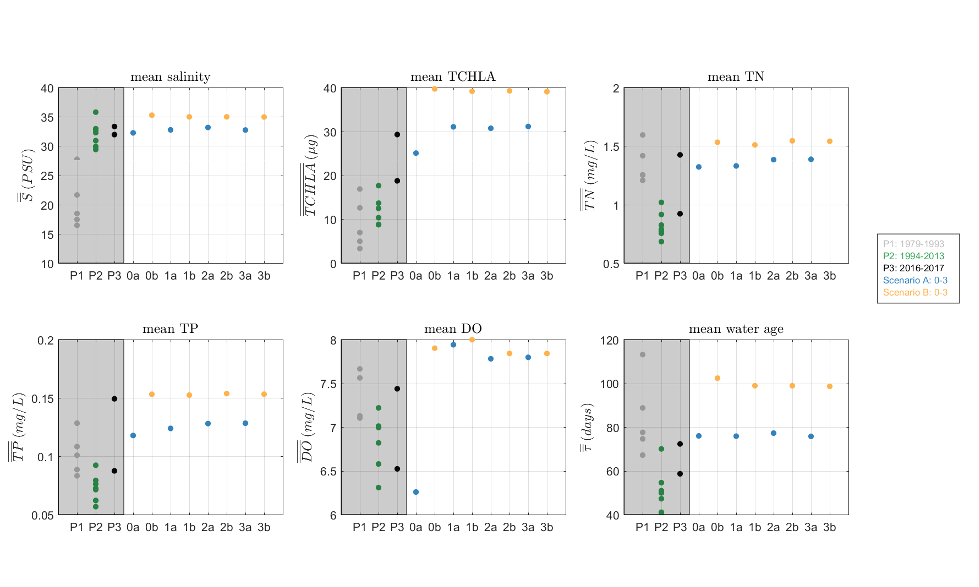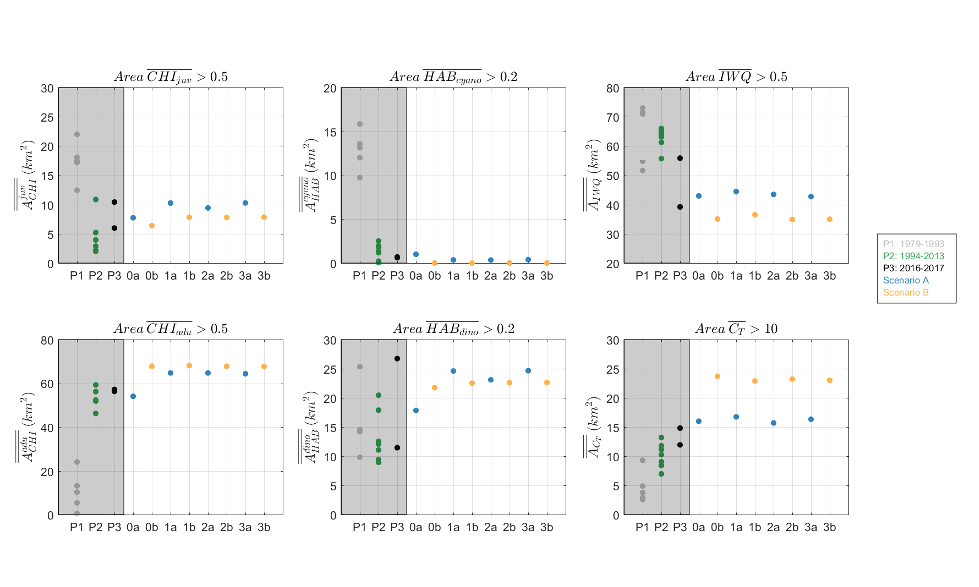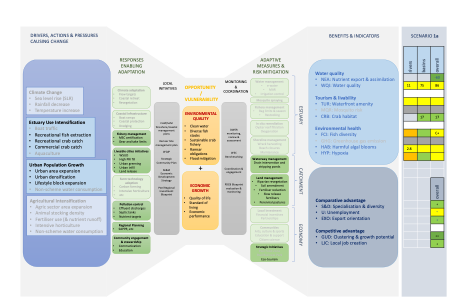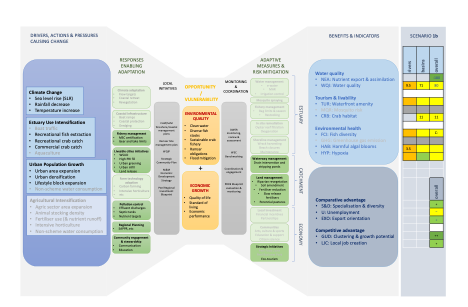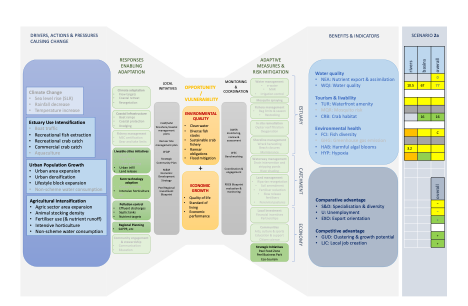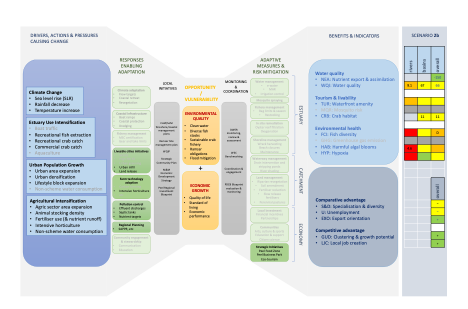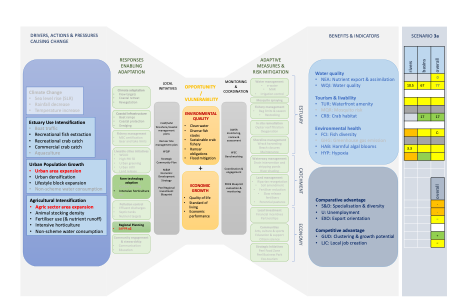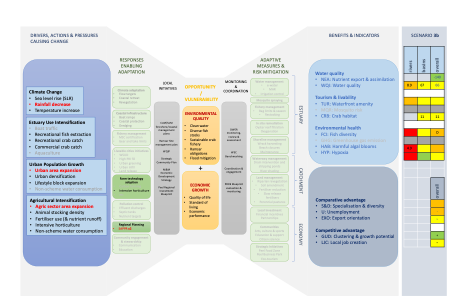The aim of this research was to develop a decision-support framework able to assist in understanding trade-offs between regional catchment development drivers (economic resilience) and the health of receiving estuarine waterways (environmental and ecological resilience). The framework reported is used to assess a series of scenarios that were designed after a stakeholder consultation process. These scenarios represented alternate future (2050) “storylines” that depicted different estuary health states, catchment development and management approaches and climate conditions for the Peel-Harvey system. These diverse views were synthesised into three main narratives (referred to as ‘environmentally optimistic’, ‘business as usual’ and ‘environmentally pessimistic’) and translated into coupled catchment-estuary model simulations. A range of novel environmental and economic indicators were then employed to assess the scenarios relative to a ‘base case’ (current conditions).
From an environmental point of view, the scenarios tested show the overwhelming influence of a future dry climate on the flow of water to the estuary. While flows and nutrient loads are reduced, the flow-weighted nutrient concentrations remained fairly constant between matched land use scenarios that were subject to the two different climatic conditions. Catchment management actions were able to reduce the nutrients entering the estuary, with the most “environmentally optimistic” scenario able to reduce flow-weighted nitrogen by 24% and flow-weighted phosphorus by 69% compared to current conditions.
The effect of climate change and land-use change for each scenario were compared by assessing the resulting differences in a range of water quality and ecosystem health indices. These indices also highlighted the relatively large change brought about by climate change (including sea level rise and catchment drying) into the future, which has the potential to significantly alter aspects of estuary condition, particularly on the eastern side of the basins and into the riverine reaches. Whilst some indices reported future benefits in some regions, overall the predictions indicated a more stressed system into the future and particularly exacerbated problems with hypoxia and harmful algal blooms in the rivers. The environmentally optimistic scenario did highlight, however, the potential benefit of sound catchment management on reducing negative impacts on the estuary and can help the adaptation process towards a drier future. The detailed model outputs are extensive and can be used to assist understanding of local changes and prioritise monitoring and management strategies.
The scenarios were also assessed in terms of economic health. The framework for assessing economic health indicators is based on outputs from an econometrics model used to assess the historical and current regional job growth data. As such, the economic assessment did not seek to model long-term economic activity of individual sectors, but rather to provide a “systems view” of whether proposed stressors or actions would enhance economic specialisation, industry-linkages and job growth. Core indicators assessed for each scenario were therefore related to the comparative and competitive advantage of the regional economy, and a qualitative assessment of each indicator was made.
To provide a holistic view of the relative environmental and economic status of each scenario, a further framework for supporting high-level decision-making was developed, able to link the varied drivers, pressures, actions, impacts and responses with locally relevant environmental quality and economic resilience indicators. The framework was applied to the three main stakeholder-led scenarios to demonstrate the trade-offs of decisions in a logical and transparent way. The assessment of the chosen scenarios highlights that actions to manage the health of the estuary can support long-term economic resilience by increasing export orientation and diversification. The newly developed framework shows potential for more widespread adoption for harmonising adaptation strategies between organisations by providing a common assessment approach for managing future risks. Further effort is required to operationalise the system in consultation with stakeholders.

